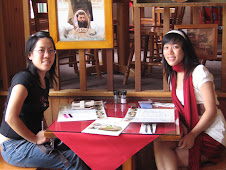
the house lizard is not as common as it was before. when we lived in the kampong, there was a lot of natural food, in the form of small insects, for the lizards. the house lizard was actually beneficial to us because it helped us to get rid of the insect pests that invaded our homes.
the lizards could be seen running up the plank walls and upside-down on the abestos ceiling, especially when the fluorescent light came on in the evening. usually, there would be three or four of them around the fluorescent tube or on the light casing itself.
the house lizard can cling to walls and ceilings because its footpads are covered with uncountable little hairs, and each of these tiny hairs has a tiny suction cup on the end. the microscopic hairs function as an adhesive and prevent the lizard from falling down.
however, once in a while, a lizard might lose its grip and fall onto the floor. that was when we would chase after it, not so much to catch it but to get it out of our sight. if the house cat happened to be around, it would pounce on the lizard.
when chased by an enemy, the lizard can shed its tail at will, by a process called autotomy, meaning literally "self cutting". eventually, a new tail will grow in its place.
a tail will often wiggle after it has come off to distract the attention of the predator so the lizard can escape. lizards sometimes eat their own tail after they have shed it to regain weight from losing the tail.
when we were young, we were told by the adults that the wriggling tail could jump into our ear. so, each time we saw a wriggling tail, we would stay far away from it and being the naive children that we were, we would cover both our ears very tightly.
the malay name for it is chichak, which is quite close to the sound that it makes.
today's children not only do not encounter lizards in their homes, most of them have not ever seen a lizard shedding its tail or the wriggling detached tail on the ground.







No comments:
Post a Comment